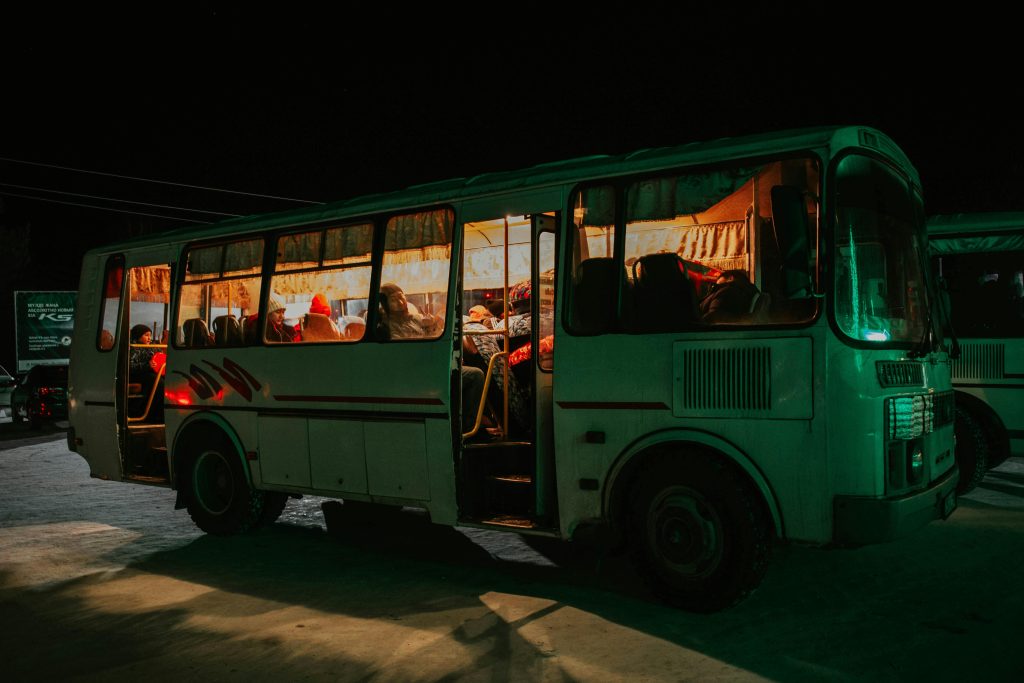
How to Travel South America on $50 a Day: Best Travel Hacks for Budget Travelers in 2024
South America offers an incredible mix of stunning landscapes, vibrant cultures, and unforgettable adventures. With a little planning and some insider tips, you can explore this captivating continent on a budget of just $50 a day. Here’s the ultimate guide to traveling smart, saving money, and experiencing South America like a pro.
Planning your South American adventure? Start by booking your flights with Skyscanner and finding affordable accommodations on Booking.com.
For more tips, check out our Guides for Latin America or learn how to navigate solo trips with our Traveling Solo Tips.

1. Look for Long-Term Rentals to Save Big on Accommodation
Hotels and short-term rentals can drain your budget fast, but long-term options offer fantastic savings.
- Facebook Marketplace and Local Groups: Skip booking apps and search for apartments on Facebook. Locals often post great deals on monthly rentals far below nightly rates.
- Airbnb Discounts: Airbnb hosts frequently offer up to 50% off for stays longer than 28 days. Be sure to message hosts to negotiate even better rates.
- Hostels with Deals: Many hostels provide discounts for week-long stays or in exchange for light work (e.g., reception duties or event organization).
Explore hostels with great weekly rates on Hostelworld.
Pro Tip: Look for accommodations with kitchen access so you can save even more by cooking your meals.
2. Shop at Local Markets for Affordable Food
Food costs can add up quickly if you rely on restaurants and supermarkets. Instead, head to bustling local markets to stock up on fresh produce, meats, and staples.
- Fruits and Vegetables: Markets are 50% cheaper than supermarkets and offer fresher options.
- Street Food: Try delicious and authentic meals like empanadas or tamales for just $1–$3.
- Meal Prep: Buy local ingredients to cook at your hostel or Airbnb. A homemade meal can cost as little as $2 per serving.

Pro Tip: Learn a few basic phrases in Spanish, like “¿Cuánto cuesta?” (How much does it cost?), to ensure you’re getting the best deals and bring along a reusable shopping bag to carry your fresh produce and save money at local markets.
Visiting local markets is a cultural experience in itself. Learn how to fully immerse yourself in new cultures with our Cultural Immersion Guides.
3. Choose a Local SIM Card Over E-SIMs
Staying connected is essential for navigating new destinations, but international plans or E-SIMs are expensive.
- Local SIM Cards: Companies like Claro, Movistar, and Entel offer prepaid plans with data for as little as $10 for 10GB.
- Where to Buy: SIM cards are available at airports, convenience stores, or official kiosks.
- Pro Tip: Bring an unlocked phone to easily switch between local networks. Consider using a local SIM card for data. If you’re moving between countries, a device like a portable Wi-Fi hotspot can be invaluable.

4. Research Prices in Advance to Avoid Scams
Tourists are often overcharged for everything from taxis to souvenirs. Protect your wallet by doing a little research before you buy:
- Apps and Tools: Use Google Maps, Rome2Rio, Uber or InDrive to check typical transportation costs.
- Ask Locals: Locals can provide insight into fair prices for food, activities, and rides.
- Currency Conversion: Download an app like XE to avoid confusion with local money.
Pro Tip: Always carry small bills, as vendors often “conveniently” lack change for large denominations.
5. Plan and Organize Tours Yourself
Guided tours are great but often come with a hefty price tag. With some research and a sense of adventure, you can create your own.
- Ask for Tips: Locals know the best (and cheapest) ways to visit attractions.
- Public Transport: Buses and trains can take you to popular spots for a fraction of the cost.
- Free Walking Tours: Many cities offer free tours where you tip the guide what you can afford.
Pro Tip: Stick to self-guided tours in safe areas and use maps or apps for directions. When guided tours are necessary, you can find budget-friendly options on GetYourGuide or Viator.
6. Use Local Transportation for Big Savings
Ditch taxis and Uber and embrace public transportation for major savings.
- Local Buses: Tickets often cost as little as $0.50.
- Night Buses: Long-distance buses are a cost-effective way to travel between cities while saving on accommodation.
- Border-Crossing Buses: These offer scenic and affordable alternatives to flights.
- If you still feel more comfortable taking taxis for short-medium long rides consider booking your Taxis on InDrive (the Uber of Latin America).
Download the app here.
Pro Tip: Look for “semi-cama” or “cama” seats on night buses for extra comfort. Platforms like Rome2Rio and Busbud, Peruhop help you book affordable bus routes across South America.
Check out our Ultimate Lima Guide for tips on exploring Miraflores, food markets, and more without spending a fortune.

7. Don’t Be Afraid to Bargain
Bargaining is part of the culture in many South American markets, and it’s expected for items like souvenirs, tours, or even transportation.
- How to Bargain: Start by offering 30–50% below the asking price and negotiate politely.
- Where It’s Common: Souvenir markets, food stalls, and local shops.
Pro Tip: Smile, be friendly, and know when to walk away. Vendors often lower prices if they see you leaving.
8. Learn Basic Spanish for Better Deals and Experiences
Knowing a few Spanish phrases can make a world of difference when negotiating prices, navigating transportation, or interacting with locals.
- Phrases to Learn:
- “¿Hay descuento?” (Is there a discount?)
- “¿Dónde está…?” (Where is…?)
- Language Apps: Duolingo or Babbel can help you learn quickly.
Pro Tip: Even basic attempts at Spanish are appreciated and can result in better prices and friendlier interactions.
9. Stay Flexible for the Best Deals
Rigidity can be expensive. If you’re open to changing plans, you can snag amazing last-minute deals on transportation, accommodation, or tours.
- Flight Deals: Check Skyscanner or Google Flights for cheaper flights by being flexible with dates.
- Accommodation Discounts: Walk-ins at hostels or guesthouses often lead to negotiated discounts.
10. Volunteer or Work for Accommodation
Extend your stay for free by exchanging your time and skills for a place to sleep.
- Platforms: Websites like Workaway and Worldpackers connect travelers with opportunities to volunteer at hostels, farms, or community projects.
- Example Roles: Teaching English, bartending, or helping with social media.
Pro Tip: Look for positions that also include free meals for added savings.

11. Use a Travel Credit Card with No Foreign Transaction Fees
Save on fees while earning points that can be redeemed for flights or hotels.
- Examples: Chase Sapphire Preferred, Capital One Venture, Trade Republic
- Perks: Many cards offer travel insurance, lounge access, and cashback.
12. Carry a Reusable Water Bottle (with a Filter)
Save money on bottled water while reducing waste.
- Products: Bottles like LifeStraw or Grayl purify water on the go. For more ideas on what to bring, check out our Ultimate Packing Guide for South America.
13. Explore Free Museums and Cultural Events
Immerse yourself in local culture for free:
- Museum Free Days: Many cities offer free or discounted museum admission on specific days.
- Cultural Festivals: Check local calendars for free parades, performances, or events.
Sample $50/Day Budget
Here’s an example of how you can allocate your budget:
- Accommodation: $15–20 (hostel dorm or long-term Airbnb).
- Food: $10–15 (market meals or street food).
- Transportation: $5–10 (local buses or night buses).
- Activities: $5–10 (self-guided tours or free attractions).
Immersing in local culture is not only fulfilling but also budget-friendly. Learn how to do it with these 12 tips.
Final Thoughts
Traveling South America on $50 a day is not just a possibility—it’s a rewarding way to see the continent authentically and affordably. By being flexible, resourceful, and adventurous, you’ll create unforgettable experiences while staying on budget.
Ready to start your journey? Share your favorite budget tips in the comments below! 😊
Want more tips for affordable travel? Explore our guides on
Solo Travel in Latin America or Cultural Immersion on a Budget.
Best Camera Settings for Stunning Cherry Blossom Photography
1️⃣ Use the Right Aperture (f/2.8 – f/5.6 for Blurry Backgrounds) A…
Best Areas to Stay for the Cherry Blossom Festival (2025)
Each neighborhood in D.C. offers a unique experience, from luxury stays with…
How to Get Around & Avoid Crowds at the Cherry Blossom Festival (2025 Guide)
The National Cherry Blossom Festival is one of D.C.’s biggest events, attracting…
The Best Cherry Blossom Food & Drinks in D.C. (2025)
Every spring, Washington, D.C., transforms into a pink wonderland with the arrival…
Your Ultimate Guide to Washington, D.C.’s Cherry Blossom Festival 2025
Introduction: Why You Can’t Miss the Cherry Blossoms in D.C. Every spring,…
10 Best, Cultural Festivals to Attend In Latin America
The 10 Most Spectacular Festivals in Latin America You Must Experience Latin…
How to Immerse Yourself in Local Culture: 12 Authentic Travel Tips
Traveling is more than just visiting tourist attractions and snapping photos of…
